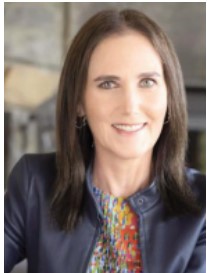systems in spaces that include hearing loops. A hearing loop is a loop of wire that transmits sound via a magnetic field. Sound is picked up by microphones within the looped area and transmitted directly to telecoil-enabled devices, such as hearing aids. Users will hear just the sound within the loop, clearly and crisply, but none of the background noise, which can be very helpful for enjoying the-ater or lectures in a looped auditorium.
Captioning is also a terrific technology to enhance communication. The gold standard is CART (https://en.wikipedia.org/wiki/Communication_access_real-time_translation), where a trained technician types what is spoken in real-time, but this is not always available. Another option is auto-captioning which uses artificial intelligence to convert speech into text. Speech-to-text apps are numerous (my favorite is Otter; https://otter.ai), and now both Apple (https://hearinghealthmatters.org/findhearing/2022/live-captions-hearing-loss-iphone) and Android (https://livingwithhearingloss.com/2022/07/12/advanced-speech-to-text-technology- could-give-voice-to-many) phones have auto-captioning built into their operating systems, when enabled in the accessibility settings.
3. CHANGING THE COMMUNICATION GAME WITH NON-TECHNICAL TOOLS
Small changes in communication behaviors can have a huge impact on the quality of conversation. For instance: self-identifying as having hearing loss. It sounds simple but for many people, this is difficult. Perhaps talking about your hearing loss feels personal or shrouded in stigma, but if people don’t know you are having trouble hearing them, they are not able to help. One MindShift is “Being open about my hearing loss will help me communicate bet-ter. Trying to hide my hearing loss leads to misunderstandings.”
But self-identifying is only the first step. People aren't mind readers. We need to tell them what we need (i.e., speak louder and slower please) and what we don't need (i.e., shouting or dismissing us with a "never mind"). This goes beyond self-identifying. This is self-advocacy.
Other non-technical tools include speechreading, as well as using communication best practices: like getting my attention first, facing me, and keeping your mouth uncovered, are simple yet important tips that can transform a conversation.
LIVING SKILLFULLY WITH HEARING LOSS IS POSSIBLE
Living with hearing loss makes communication challenging, but with a healthy mindset, a full array of technology tools, and game-changing communication behaviors, anyone can live more skillfully with it. •
ABOUT THE AUTHOR:

Shari Eberts is a passionate hearing health advocate and internationally recognized author and speaker on hearing loss issues. She is the founder of Living with Hearing Loss (livingwithhearingloss.com), a popular blog and online community for people with hearing loss, and an executive producer of We Hear You (we-hearyou.com), an awardwinning documentary about the hearing loss experience. Shari has an adult-onset genetic hearing loss and hopes that by sharing her story, she will help others to live more peacefully with their own hearing issues.Her book, Hear & Beyond: Live Skillfully with Hearing Loss, (co-authored with Gael Hannan; amazon.com/Hear-Beyond-Living-Skillfully-Hearing/dp/1774581604) is the ultimate survival guide to living well with hearing loss.
